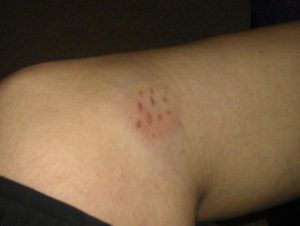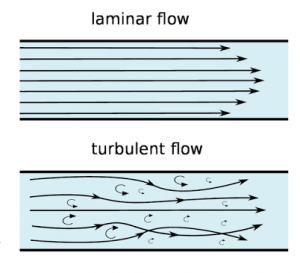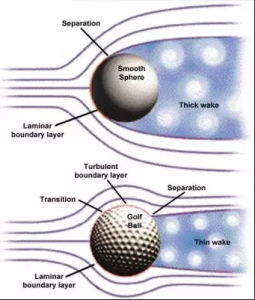Having played field hockey for the past 15 years I’ve seen my fair share of unusual injuries and have even had the pleasure of experiencing a couple myself. But there’s one injury that’s not so uncommon and that’s a nice big bruise from being hit in the leg with a ball. Despite this being one of the most frequent injuries there is one weird characteristic, the bruises always reflect the dimpled surface of a field hockey ball, leaving a distinct pattern.

An example of the bruise left by a dimpled ball. Source: Caroline Dane
So, this got me wondering about whether there is a reason that field hockey balls, like golf balls, tend to have dimples covering the surface. As it turns out, the answer to this question is…
Yes!
The dimples allow the ball to travel both faster and further and it’s all thanks to some basic aerodynamic properties.
There are two main types of airflow: laminar and turbulent. Laminar flow is when the fluid flows in parallel layers with very little friction between layers (as depicted in the diagram below). On the other hand, turbulent flow is when the fluid undergoes chaotic movement and the layers mix.

Diagram contrasting laminar and turbulent flow. Source: Automation.com
The dimples on a field hockey ball make the surface irregular, which causes a layer of turbulent air to form around the outside. While this may sound contrary, the friction from this layer of turbulent air is exactly what allows the ball to move through the air more efficiently. The increased friction sucks the air to the ball delaying the moment that the air is then separated from the ball. As the ball travels through the air it leaves a wake behind it, like that of a boat, which exerts drag on the ball in the direction opposite to the motion. Due to the delay in separation, thanks to the turbulent air layer, this wake is much smaller in balls with dimples and as a result there is less of a drag force counteracting the forward momentum.

Different wake sizes due to separation point. Source: Kazuli
While the dimples definitely make our shots go faster it sure hurts more when I happen to get in the way of an oncoming ball!
– Nicola Popper

5 responses to “The Dynamics of Dimples”